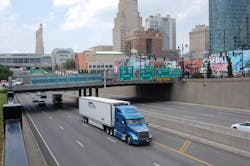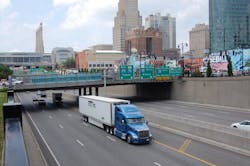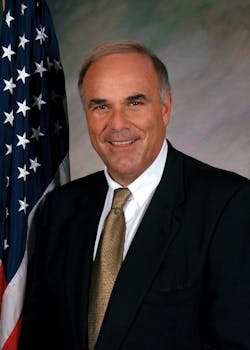For example, the Laborers’ International Union of North America (LIUNA) recently commissioned a randomized national survey of 1,006 adult U.S. voters to find out if support exists for raising fuel taxes and found support seems to exist for such a move – as long as any funds generated by such a tax boost are dedicated to highway infrastructure needs alone.
LIUNA’s poll – conducted May 29 through June 1 by Hart Research Associates – dug up some interesting findings:
- 59% of Americans worry about unsafe road conditions due to poor road surfaces – and 27% worry often.
- Worries are highest in the Northeast (69%) and Midwest (67%) and in urban areas (70%).
- 28% say road conditions have contributed to an accident involving themselves or someone they know.
- 40% say they or someone they know has almost had an accident or lost control of their car due to poor road surfaces.
- 69% say poor road conditions contribute to wear and tear on their car.
- 58% of those identifying themselves as Democrats and 57% of those identifying themselves as Republics in the poll say road conditions are a problem and need fixing.
“No one likes taxes but numerous polls are starting to show the public’s growing concern about road conditions and congestion,” LIUNA General President Terry O’Sullivan said during a conference call with reporters to discuss the group’s survey findings.
[In particular, LIUNA’s background material cited studies conducted by the Mineta Transportation Institute concerning the increased willingness to shoulder an increase in fuel taxes. You can read more about that research here and here.]Former Pennsylvania Gov. Ed Rendell, who now serves as co-chair of the interest group Building America’s Future, made an interesting comparison between the cost of higher taxes and the cost of vehicle wear and tear from driving on bad roads.
He explained that a 15 cent per gallon hike in the U.S. fuel tax – something he said would’ve already occurred if the fuel tax had been indexed to inflation form the start – would translate into about $120 per year for motorists who drive about 12,000 miles annually and achieve an average of 20 miles per gallon in fuel economy.
By comparison, the American Society of Civil Engineers calculates that the wear and tear upon vehicles operating over bad roads, Rendell (at right above) said – which gets added to $818 per year in fuel wasted while idling in traffic congestion, according to data from The Road Information Program (TRIP), he added.
“Thus is costs the U.S. motorist seven times more to do nothing versus raising fuel taxes to fix the problem,” Rendell noted.
TRIP’s research that poor road conditions such as potholes contribute to a third of all traffic fatalities – or about 10,000 lost lives a year, adding a significant safety aspect to this funding debate.
Rendell did stress, though, that while a 15 cent per gallon fuel tax hike “would not solve all our infrastructure problems” it would provide a “good start” in terms of stabilizing the HTF and keeping current and future road and bridge projects on track.
Rendell also noted something else that is rather interesting: groups with usually diametrically opposed interests, such as the AFL-CIO and Chamber of Commerce, are fairly united in support of raising fuel taxes as long as they are dedicated to funding transportation infrastructure needs.
[Even some trucking industry groups, such as the American Trucking Associations (ATA), are long-time supporters of higher fuel taxes as well. Indeed, ATA’s public support for such a hike is five years old at this point.]
LIUNA’s Sullivan told me during the phone conference that he believes the infrastructure funding problem results from what he called the “paralyzed” nature of the political culture on Capitol Hill – and he made no bones about it.
“It’s getting worse not better: they are focused on getting re-elected and are unable to take a common sense approach about fuel taxes,” he said.
Avery Ash, director of federal relations for the American Automobile Association (AAA), added that LIUNA’s survey matches findings from his organizations polling as well – that two-thirds of Americans believe the federal government should invest more than it does now on roads, bridges and mass transit systems.
Ash also told me that state governments are in some cases taking this funding issue into their own hands, with six states so far putting some sort of tax plan in place to help pay for road and bridge repairs.
And both he and LIUNA’s O’Sullivan believe more “grassroots” support will develop for increasing fuel taxes as the summer driving season gets into full swing as motorists experience bad roads and the traffic delays that often accompany them.
We’ll see if that pans out in the coming months.


